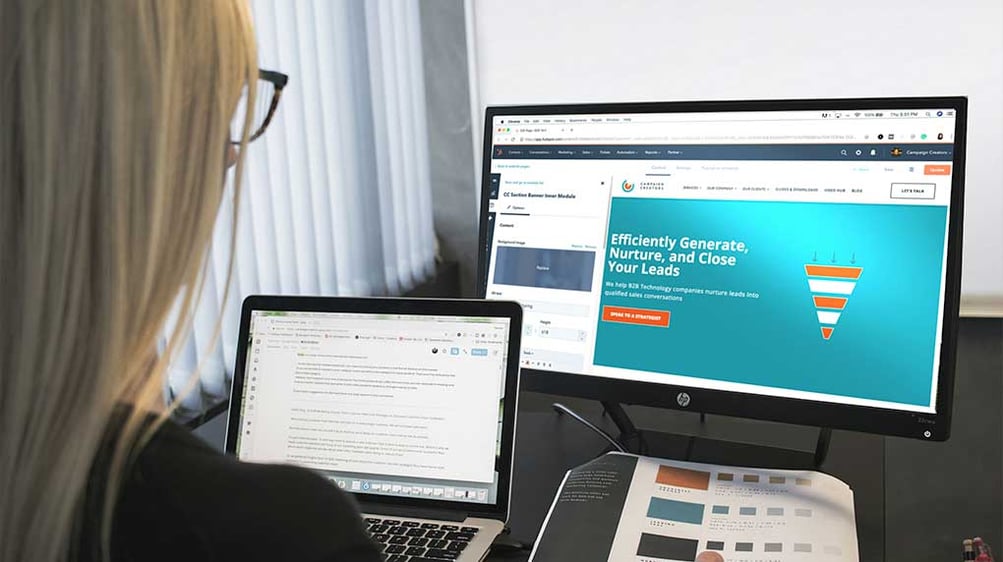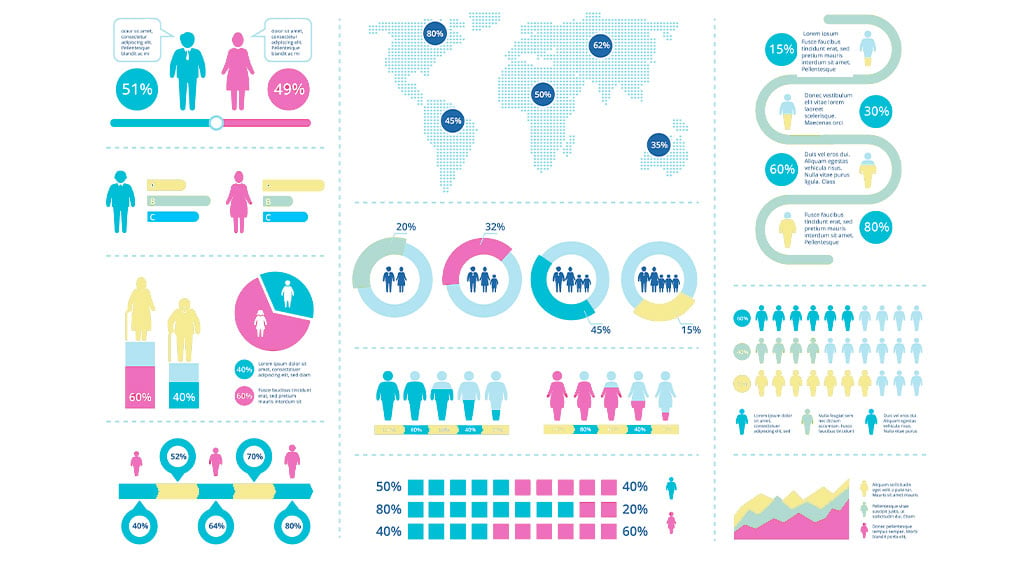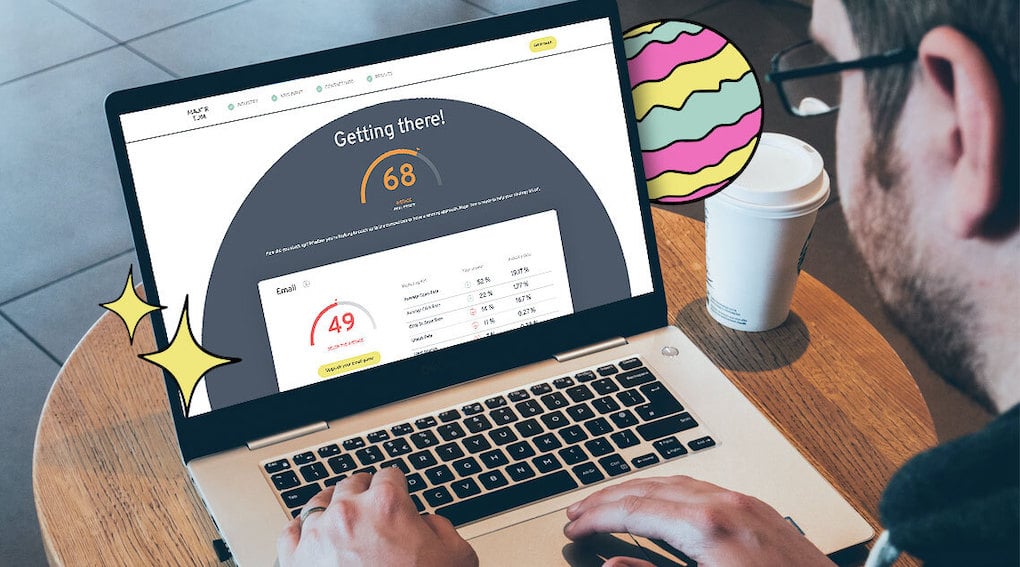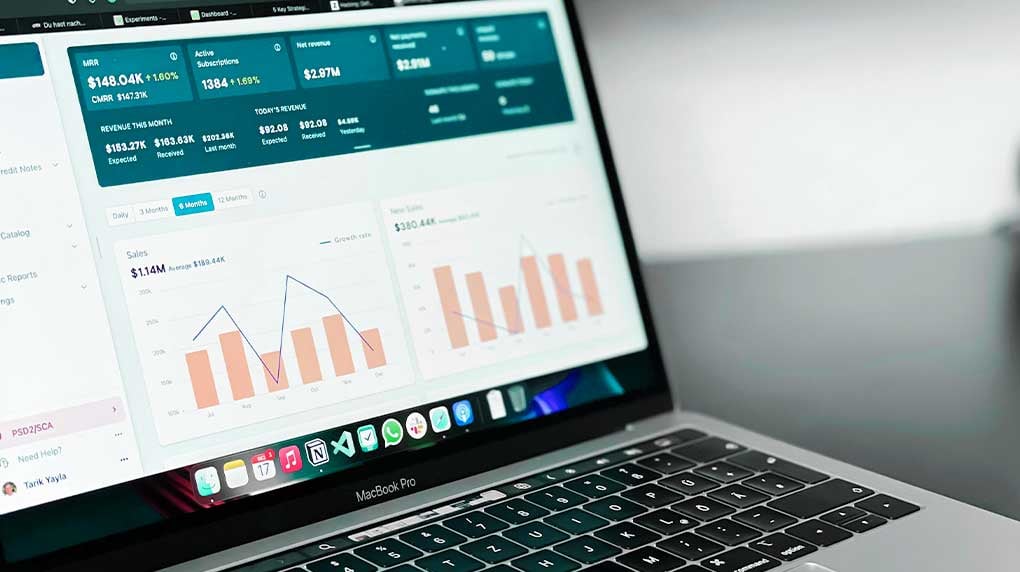If you’re looking to nail your next B2B programmatic advertising campaign, you’re in the right place.
B2B programmatic advertising is an intricate landscape. It’s full of its own challenges and opportunities. To navigate this wild terrain, you need a guide outlining the critical aspects of a successful B2B programmatic campaign.
Here, we’ll be exploring:
- The best practices for B2B programmatic ads
- Common challenges for advertisers
- The future trends of the industry
The difference between B2B and B2C programmatic advertising
Let's clarify a fundamental distinction in programmatic advertising: B2B vs. B2C. While both share core principles, their execution and goals differ significantly. Programmatic advertising for B2B and B2C clients should be considered on a separate basis for success.
B2B programmatic advertising typically targets:
- Businesses
- Professionals
- Decision-makers
Its audience is often aiming to drive conversions, generate leads, or establish brand authority. It's a great channel to leverage as part of your overall paid media strategy.

On the other hand, B2C campaigns are consumer-focused, aiming to boost product sales, enhance brand loyalty, and influence purchasing decisions.
Best practices for effective B2B programmatic campaigns
To beat the best, you need to know how they do it. This section will walk you through programmatic advertising best practices in the B2B sector.
1. Audience targeting and segmentation
In programmatic advertising for B2B, you need to be precise. Defining your target audience is the first step. Having accurate knowledge of who you want to target will help ensure your ad spend is focused on the prospects most likely to convert. In turn, this makes better use of your time and budget.
How do you precisely define your target audience, you ask? Data, of course. By using data-driven insights, you can pinpoint potential clients based on their industry, job titles, company size, and online behavior.

Major Tom partnered with Seneca College to help boost enrollment through digital campaigns. Tactics included refined Google Ads targeting, improved audience and ad group segmentation, custom landing pages, programmatic ad buys, and more. This targeting and segmentation, along with the other facets of the strategy, resulted in:
- 89% increase in lead volume.
- 53% decrease in cost-per-lead.
- 198% increase in conversion rates.
Here’s more on how to maximize your efforts with advanced programmatic display strategies efforts with advanced strategies.
2. Creative strategy and personalization
Capturing the attention of B2B audiences requires a creative strategy. Tailor your ad creatives to address the specific pain points, challenges, and aspirations of your target businesses.
Personalization is key here. Try showcasing how your product or service can solve real problems they face in your B2B display ads.
Being a B2B brand ourselves, Major Tom knows a thing or two about creating personalized funnels for an audience. A lead generation campaign featuring a free marketing benchmark tool offered a look into industry benchmarks for prospective clients. This campaign gave our audience real value while generating conversions for Major Tom.
Pro tip: Keep your programmatic display benchmarks in mind to see where your ads are landing.

3. Data-driven decision making
Data is an absolute necessity for true campaign success. Use your analytics to monitor, optimize, and refine your campaigns continuously. By keeping an eye on your KPIs and your user behaviors, you can make strategic choices and, ultimately, improve your ROI.
Major Tom’s use of data-driven methodologies helped B2B client Criteo with a bespoke paid media strategy, for example. The results saw a 78% increase in website conversions.
4. Integrating with multi-channel strategies
Programmatic advertising should complement your broader B2B marketing strategy. No one finds success in a silo.
Think about it from your audience’s point of view: No one goes online and only sees paid advertisements, no matter if it’s some of the best B2B display ads or not. That’s simply not how it works. What’s more likely is someone will see an ad, click on it, head to your website, then Google you, and land on your social media channel.
A multi-channel approach aligns your programmatic campaigns with other marketing efforts, like your content marketing, email marketing, and b2b social media marketing. This enhances brand consistency and maximizes reach.
Regarding all areas of B2B marketing, here are the latest and greatest must-knows from the B2B Marketing Expo.

5. Privacy compliance and ethical advertising
In today's digital landscape, privacy and ethics are paramount. Adhere to privacy regulations like GDPR and ethical advertising standards rigorously. Not only is it the right thing to do, but it also saves you from a PR nightmare down the road.
At Major Tom, ethical practices are the standard not only in programmatic campaigns but in all facets of our digital marketing services.
Overcoming common challenges in B2B programmatic advertising
Like we outlined above, B2B programmatic advertising has different needs from B2C advertising. That means it also comes with its own set of challenges. Here are the common challenges faced in B2B programmatic campaigns and how to overcome them.
Limited audience size leading to high CPMs
The challenge: B2B audiences tend to be smaller and more niche. This can lead to higher CPMs and potentially limited reach.
The solution: Focus on quality over quantity. Narrow down your targeting to reach the most relevant prospects. Use retargeting campaigns to engage with previous visitors. Consider account-based marketing (ABM) to hyper-target key accounts.
Ad fatigue
The challenge: Overexposure to the same ads can lead to ad fatigue among B2B audiences.
The solution: Study what your competitors are doing and invest in a fresh creative. Rotate ad creatives regularly, and A/B test different ad variations to keep content new and interesting. Consider frequency capping to limit the number of times someone sees the same ad within a specific timeframe.

Complex buyer's journey
The challenge: B2B purchases often involve a longer and more complex decision-making process. This can lead to extended conversion timelines.
The solution: Create personalized ad sequences and content that align with different stages of the buyer's journey. Use retargeting to re-engage prospects who have shown interest but haven't converted.
Go through the buyer’s journey yourself to note any opportunities where you can simplify the process. Does your audience often have questions at one area, or pause in a specific stage? Find out where the friction lies and create assets (like an FAQ or how-to video) to support sales.
Data quality and privacy concerns
The challenge: B2B data can be less readily available and more sensitive. This leads to concerns about data quality and privacy.
The solution: You can invest in data verification and cleansing processes to ensure data accuracy. Be sure to follow the law, adhere to strict data privacy regulations (like GDPR or CCPA) and obtain consent when collecting and using customer data.
Initial budget allocation
The challenge: It’s tough to know how to allocate your budget effectively when you first start your campaign and have no data of your own to pull from.
The solution: Start with clear goals and objectives. Before you have data in place, allocate your budget based on the perceived value of leads or conversions at different stages of the funnel. Then, you can implement tracking and attribution models to measure ROI accurately.
Ad viewability and fraud
The challenge: Getting your ads seen by real, engaged audiences isn’t always easy. Plus, you need to stay on top of avoiding ad fraud.
The solution: Partner with reputable ad exchanges and publishers. Use ad verification tools and employ anti-fraud measures to detect and prevent fraudulent activity. Monitor viewability metrics to ensure your ads are being seen by the right audience.
Content relevance
The challenge: Continuously producing content that’s relevant and valuable to your B2B audience can be tough.
The solution: Conduct thorough audience research to understand pain points and preferences. Develop high-quality, informative content that addresses these needs or provides value in some way. Personalize content based on the industry, role, or company size of the target audience.
Leveraging data and analytics
If you take one thing away from this article, let it be this: You need to leverage data and analytics to reach your campaign’s potential. If you don’t, you’re leaving money on the table.
Data leads to insights, and insights lead to results. The success of your campaigns hinges on your ability to collect, analyze, and act on data effectively. To do so, you need to invest in data management platforms and analytics tools. You can even take advantage of free tools like Google Analytics and invest your time into understanding the insights it provides.

Data-based insights should be used to refine your targeting strategies, optimize ad creatives, and allocate budgets more effectively.
Implementing advanced analytics techniques, such as predictive modeling or cohort analysis, can help you forecast future trends and make proactive campaign adjustments.
The better you are with data and insights, the more competitive you'll remain. But if you don’t want to spend the time learning and understanding advanced analytics, you should outsource to a party that already has the knowledge and expertise to influence your campaign. Here's a handy guide on whether you should use an in-house team or agency to manage your paid media strategy.
Looking ahead: The future of B2B programmatic advertising lies with AI and automation
The most significant trend shaping the landscape of B2B programmatic advertising is the deeper integration of AI into marketing processes.
AI encompasses various forms, including:
- Machine learning (ML),
- natural language processing (NLP),
- large language models (LLM), and
- deep learning.
All of these technologies are revolutionizing how companies can leverage vast pools of data. AI and automation are making this data more accessible and actionable than ever before.
The future of programmatic advertising will see AI making real-time decisions to better your ad performance. You’ll see more dynamic ad personalization, predictive analytics, and specific targeting precision.
Major Tom is committed to staying ahead of these transformative industry shifts. If you want to stay competitive and let your business reach new heights, partner with us today.
Follow the industry best practices for B2B programmatic ads
To create the best programmatic ads in B2B, you simply need to follow the best practices listed above. But most importantly, remember that data and analytics should inform your B2B display ads and campaign strategies.
You don’t have to navigate the complex world of B2B programmatic advertising alone. As one of the industry’s preferred programmatic advertising vendors, Major Tom can help. Take a look at our comprehensive paid media services.
Want to learn more about B2B advertising? Read What B2B can learn from B2C when turning potentials into clients.